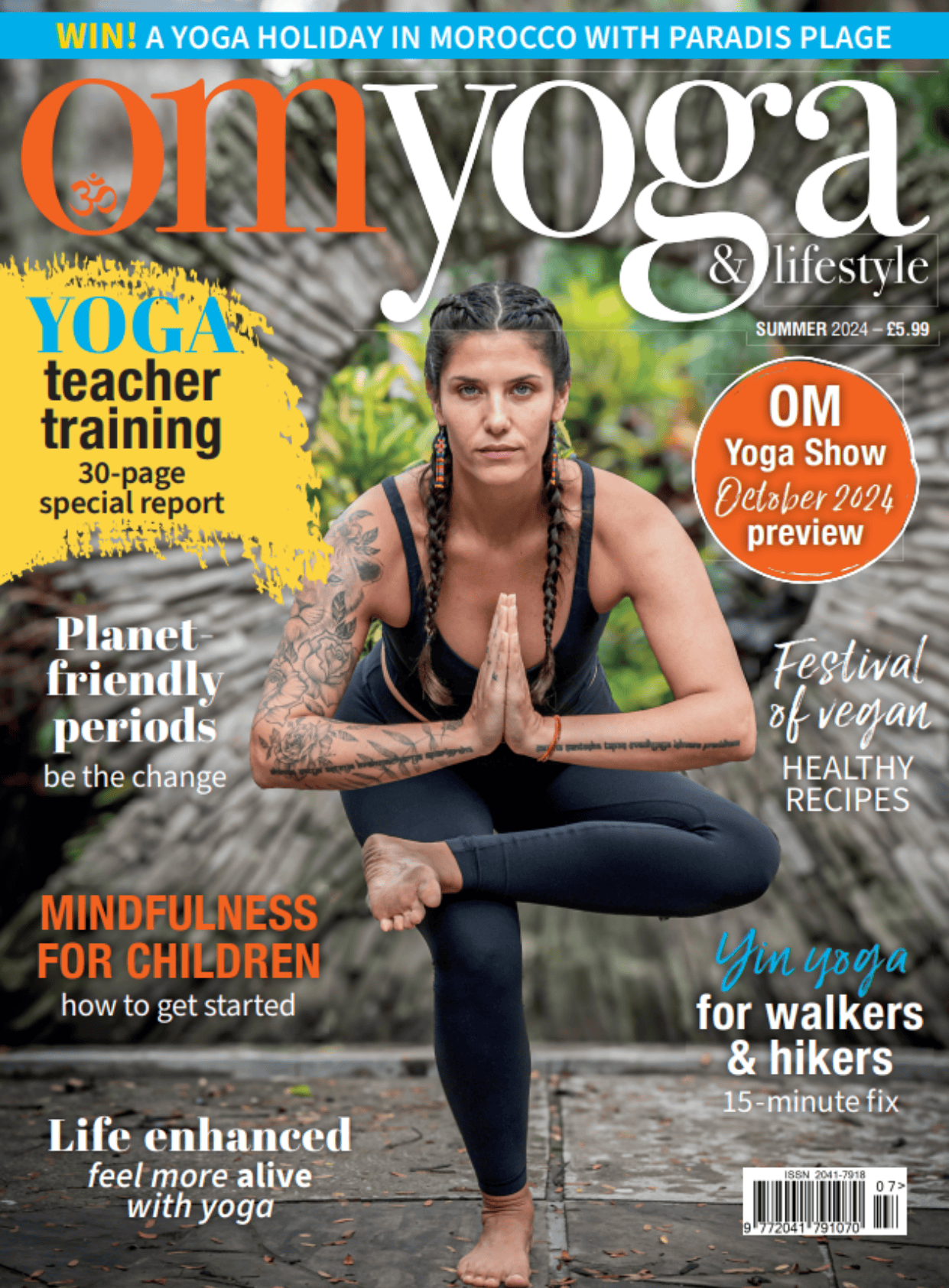
Journeying into the heart through yoga
Discover a sanctuary of inner strength waiting to be discovered with this simple heart-based yoga sequence. By Wenche Beard
In the midst of modern life, it's easy to get swept away by the currents of external demands and expectations. Yet, amidst the distractions, lies a sanctuary of inner strength waiting to be discovered — the heart.
Living in your heart isn't about being soft or weak; it's about finding the courage to embrace vulnerability and authenticity. It takes immense strength to peel back the layers of protection and allow your heart to guide you through life's labyrinth.
Yoga offers a sacred path to access the depths of the heart and each time you step onto your mat, you are invited to cultivate strength, not just of the body, but of the mind and spirit.
As you flow through your practice, pay attention to the moments when your heart whispers to you. It might be a sensation of openness in the chest during a heart-opening pose or a sense of peace that washes over you in meditation. These are the gateways to the heart, inviting you to step inside and explore its vast expanses.
When you allow your heart to be the compass that navigates you through life, you tap into an infinite wellspring of wisdom and intuition. Your heart knows the way even when the mind is clouded by doubt or fear. Trust in its guidance, and you will find yourself moving with purpose and clarity.
Embracing the path of the heart requires courage: the courage to be true to yourself, the courage to follow your dreams, and the courage to love fiercely and unconditionally. It's not always an easy journey, but it is a journey worth taking.
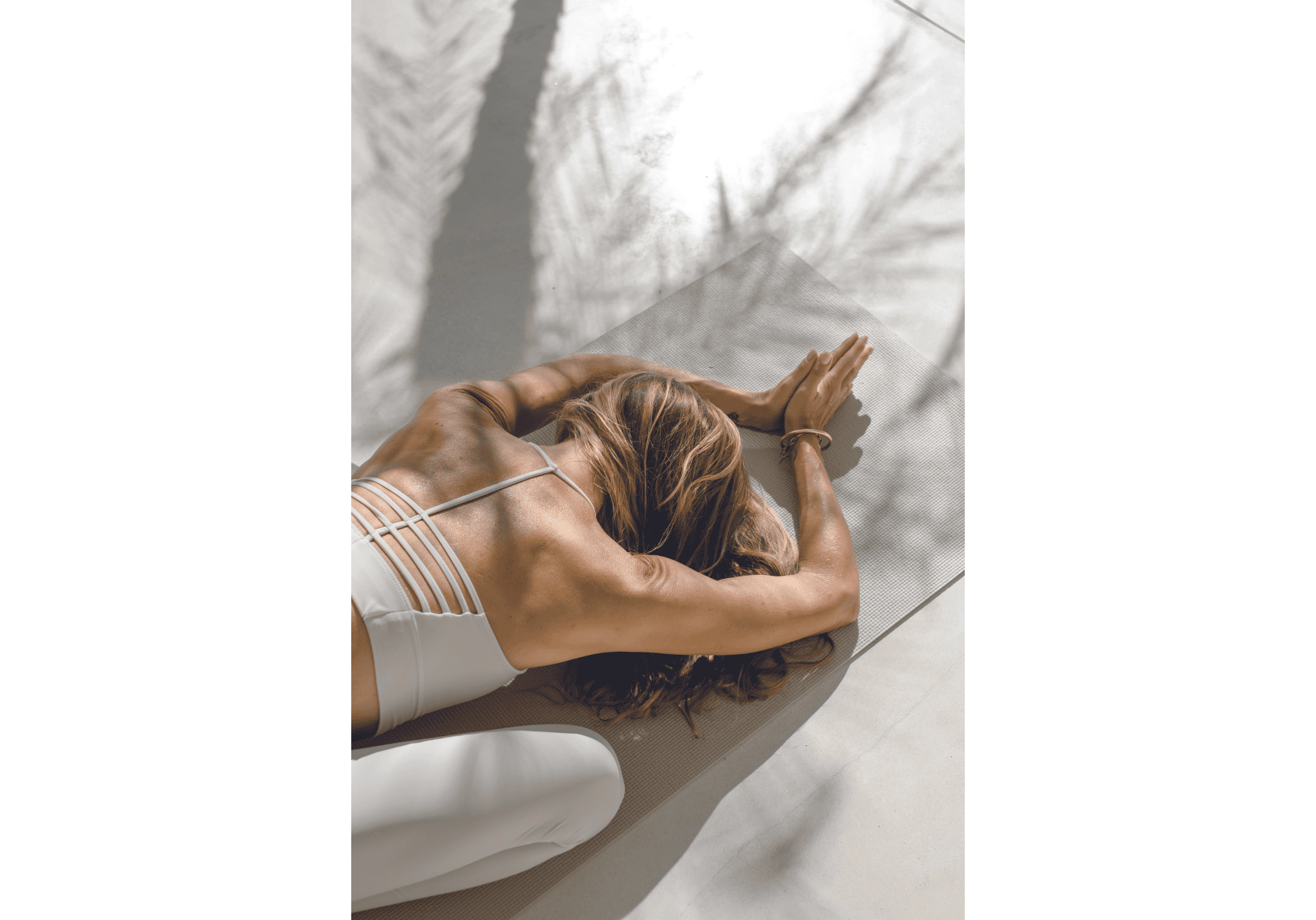
1. Extended Child Pose (Utthita Balasana)
A gentle pose, preparing for the practice ahead, Balasana brings about qualities like surrender, innocence, trust and being in the present moment. Begin your practice in extended Child Pose with your hands in anjali mudra in front of you, also known as Utthita Balasana in Sanskrit.
Start in a kneeling position on your mat, with your knees hip-width apart and your big toes touching behind you. Sit your hips onto your heels and as you inhale extend your upper body and arms forward, placing palms together in namaste, hands surrendering into this moment as you exhale. Your forehead is melting into the mat and you notice your mind quiets as all of your chatter melts into the earth beneath you. Allow your heart to feel the benefits of the mind stilling and notice the heart softening. The breath is deep and slow and with every exhale you become more present. Here, take a moment and set your Sankalpa, an intention, for your practice. Stay here focusing on slow deep breaths for 1-3 minutes, or as long as feels comfortable.
Incorporating extended Child Pose into your practice can offer a multitude of benefits for both your physical and mental wellbeing. Whether you're seeking stress relief, improved flexibility, or simply a moment of peace and tranquillity, this gentle pose can be a valuable addition to any practice. It reminds you to listen to your body and modify the practice as needed to suit your individual needs and abilities. Know that Child Pose is always available to you through your practice.
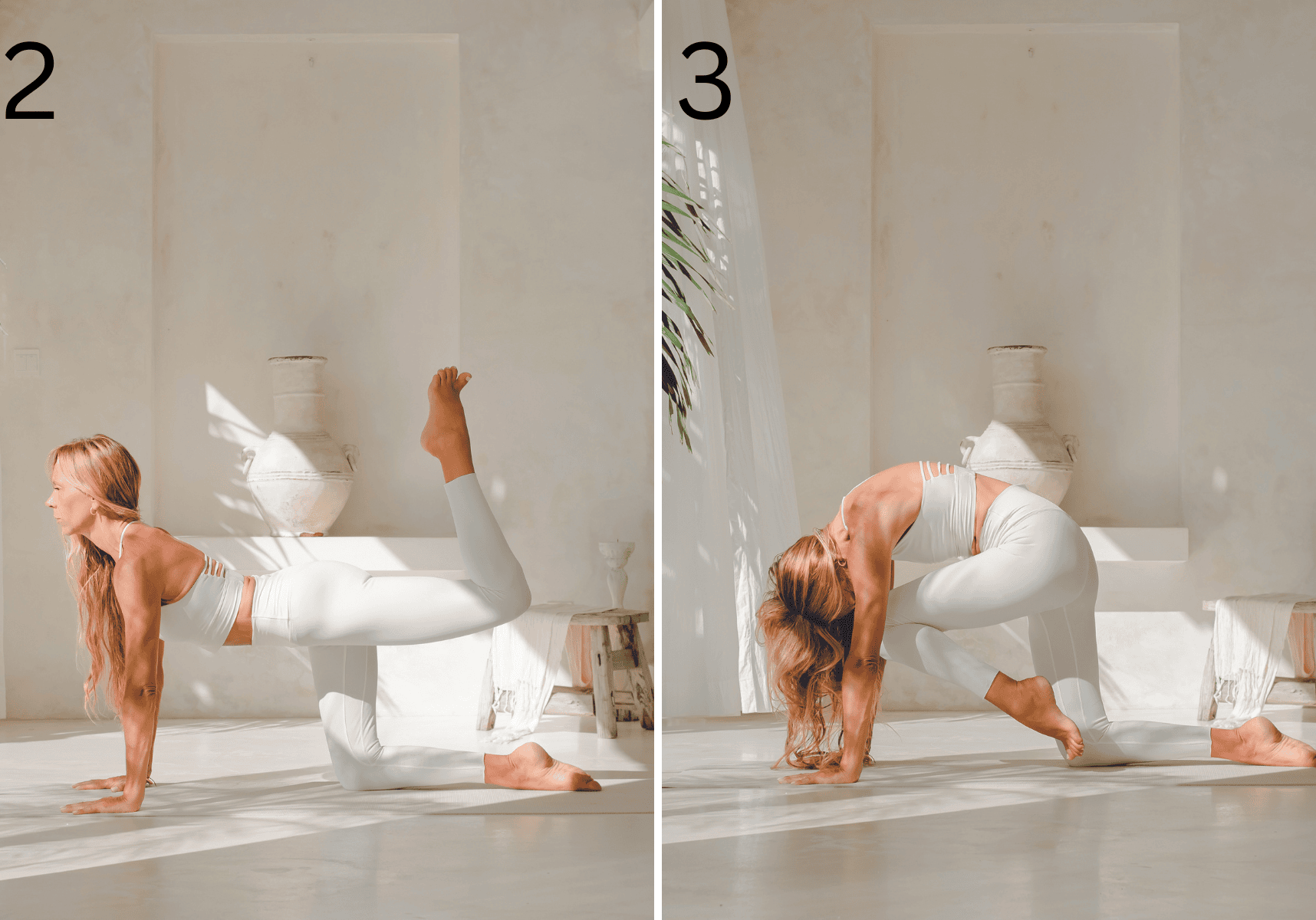
2 & 3. Flowing Tiger Pose (Vyaghrasana)
Tiger Pose, known as Vyaghrasana in Sanskrit, is a dynamic yoga movement that combines strength, flexibility and balance. As you delve into this pose, you not only mimic the grace and poise of a tiger but also harness its inner strength and focus.
This pose has transformative benefits for the body, mind and spirit. The flowing movement offers the opportunity to explore the front and back of the heart and can have a positive affect on your heart energy.
Slowly come into tabletop position on hands and knees with your wrists aligned under your shoulders and knees under your hips. Spread your fingers, middle finger pointing forward and press your palms, shins and top of the foot into your mat. Activate your core to stabilise the tabletop position.
Inhale deeply and as you exhale draw your right knee towards your chest and your forehead towards your knee as you round your back. Engage core muscles to maintain stability and balance. Inhale and let your leg flow back with your knee bent and foot towards the sky and draw your heart through the gateway of your shoulders.
Repeat 3-6 times lubricating your hips and awakening your spine. The movement begins from the hip and has a rippling effect through the spine to the head. Keep your arms straight and avoid sinking in your shoulders. Slowly release and return to the starting tabletop position and repeat on the other side.
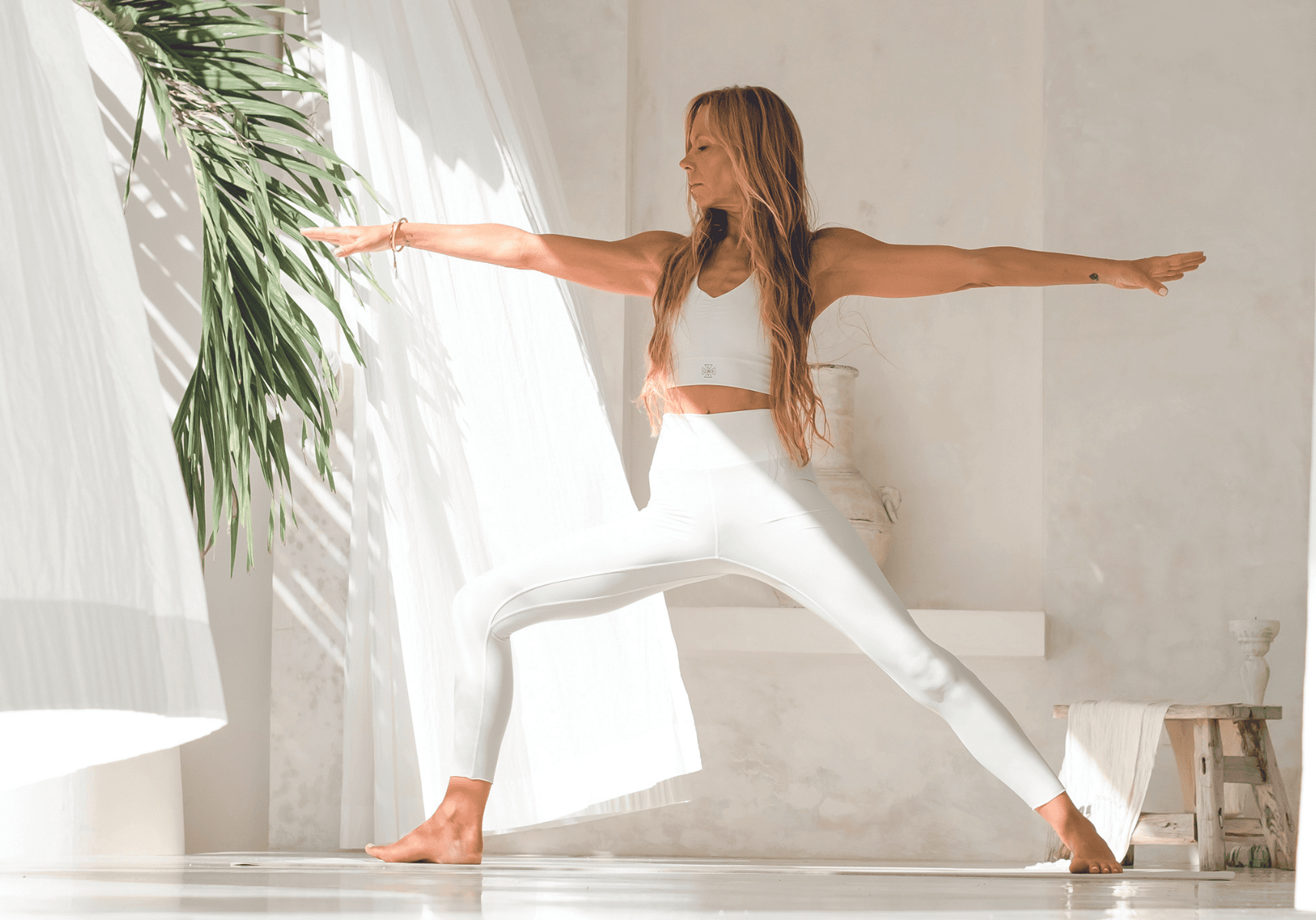
TEACHING TIPS
- Set your resolve, Sankalpa
- Let your breath lead your practice
- Always practice with your heart in mind
- Stay grounded and present
- Keep your gaze (drishti) soft but firm
- Be creative in how you can support yourself
- Emanate your energy in all directions
- Manifest the quality of your posture
4. Warrior Pose (Virabhadrasana 2)
Warrior Pose (Virabhadrasana 2) embodies the spirit of a warrior and is a powerful yoga posture that builds strength, stability and courage. Its myriad of benefits feeds the warrior within, helping you stay firmly grounded with unwavering focus on your authentic self emanating your emotional and creative power. As we connect to these qualities within we find the courage to live fearlessly in our hearts. As you discover the qualities of this pose, you experience its transformative effects way beyond the mat.
Slowly rise to standing, positioning yourself at the centre of your mat, with your feet hip-width apart and arms relaxed by your sides (Mountain Pose). When you have centred yourself, step your feet wide apart, toes pointing forward. Bring your hands on your hips and turn your right foot 90 degrees. Check the right heel is in line with the arch of your left foot and your hips are square to the front. Inhale and create space in your body and as you exhale, bend your right knee, stacking it directly over your right ankle, while keeping your left leg straight and strong. Inhale again and extend your arms out from the shoulders parallel to the ground, with palms facing down, forming a straight line from fingertip to fingertip, and as you exhale arrive in the pose. Engage your core and lengthen your spine, dropping your tailbone like an anchor towards the mat. Keep your gaze (drishti) calm and steady over your right fingertips, maintaining focus as you strengthen your resolve (sankalpa). Stay grounded and present in your heart here for three to six breaths. Repeat the mantra: “I am strong”.

5. Side Angle Pose (Parsvakonasana)
Side Angle Pose, known as Parsvakonasana in Sanskrit, activates your inner strength and improves stamina, as well as flexibility and balance. With these qualities activated within, fear loosens its grip allowing you to move forward in life with confidence.
Begin in a standing position at the top of your mat, with your feet about 3-4 feet apart, toes pointing forward. Turn your right foot out 90 degrees, aligning the heel of your right foot with the arch of your left foot. Bend your right knee, stacking it directly over your right ankle, while keeping your left leg straight and strong. Extend your arms out to the sides at shoulder height, parallel to the ground.
From Warrior 2, inhale and reach your right fingertips forward keeping your waist long, exhale and bend your elbow and place it just below the knee or on the mat in front of your foot. Simultaneously your left arm floats along the left ear, palm facing downward creating a straight line from your left heel to your fingertips while keeping your left leg straight and strong. Check you are not sinking in the right shoulder and scoop your right shoulder forward and left shoulder back slightly as if your heart and gaze is reaching for the sun. Stay here for three to six breaths as you feel the downward pull from your hips and the upward lift through your heart.
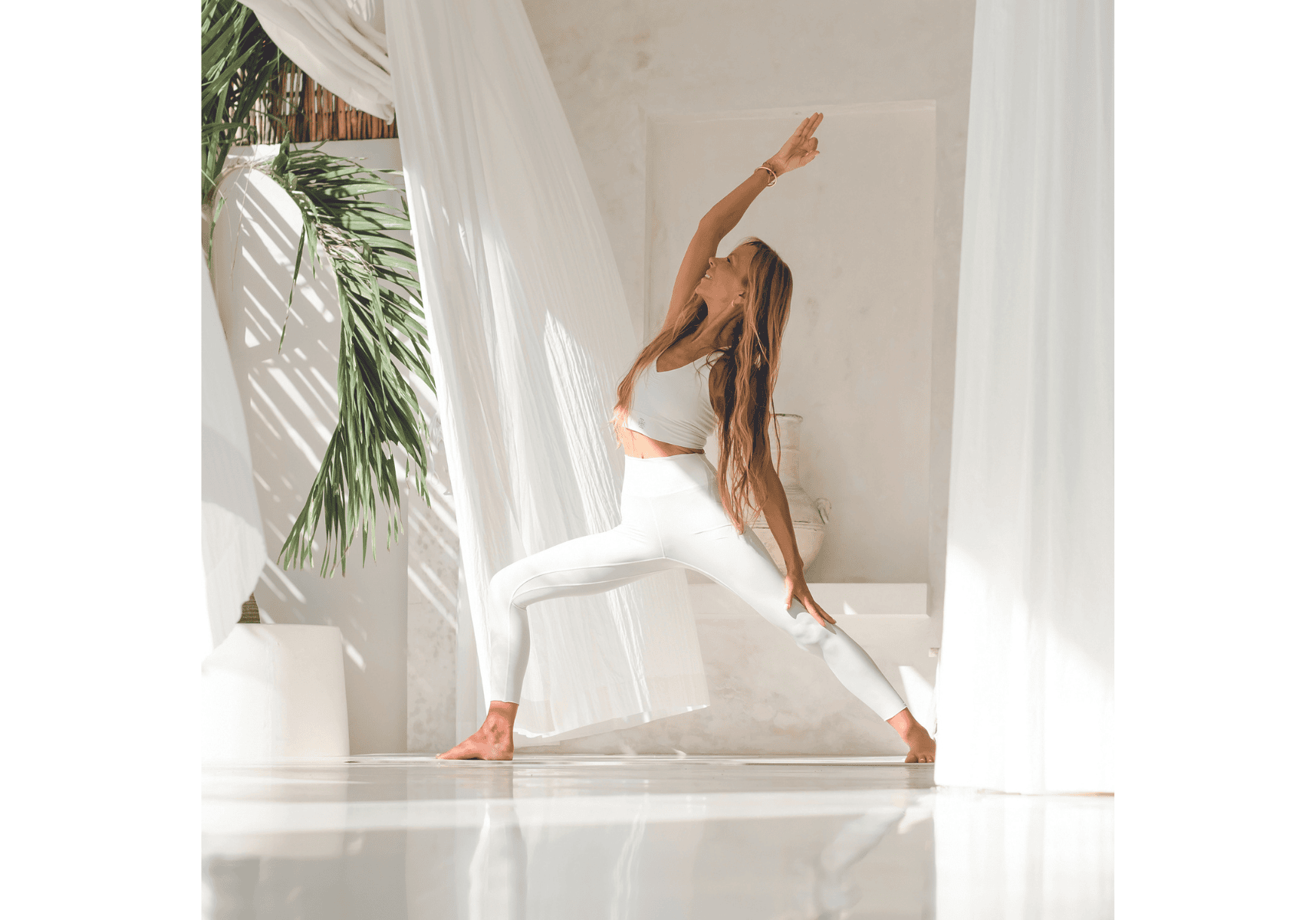
6. Peaceful Warrior Pose (Shanti Virabhadrasana)
Peaceful Warrior Pose, or ‘Shanti Virabhadrasana’ in Sanskrit, is a graceful yoga posture inviting us to be strong and focused while living with a peaceful heart. This pose gives a gentle reminder that nobody but yourself can bring you peace, even in life's challenges. Peace is rather the ability to handle life's roller coaster in a more peaceful manner and must be felt in the heart. Here we combine strength, openness and tranquillity which is always beautiful.
From your Side Angle Pose take a deep inhale and rise from your earth-driven legs and as you exhale flow gracefully into Peaceful Warrior letting your left hand slide down your left leg, maintaining length in the side body. Your right arm flows with softness along your ear, palm facing down. Activate a slight rotation of your torso as you lift your heart and gaze towards the sky. Keep your neck long and shoulders away from your ears, your face is soft and open. Stay here for three to six breaths as you resolve to stay grounded, strong and peaceful, deepening a sense of tranquillity.
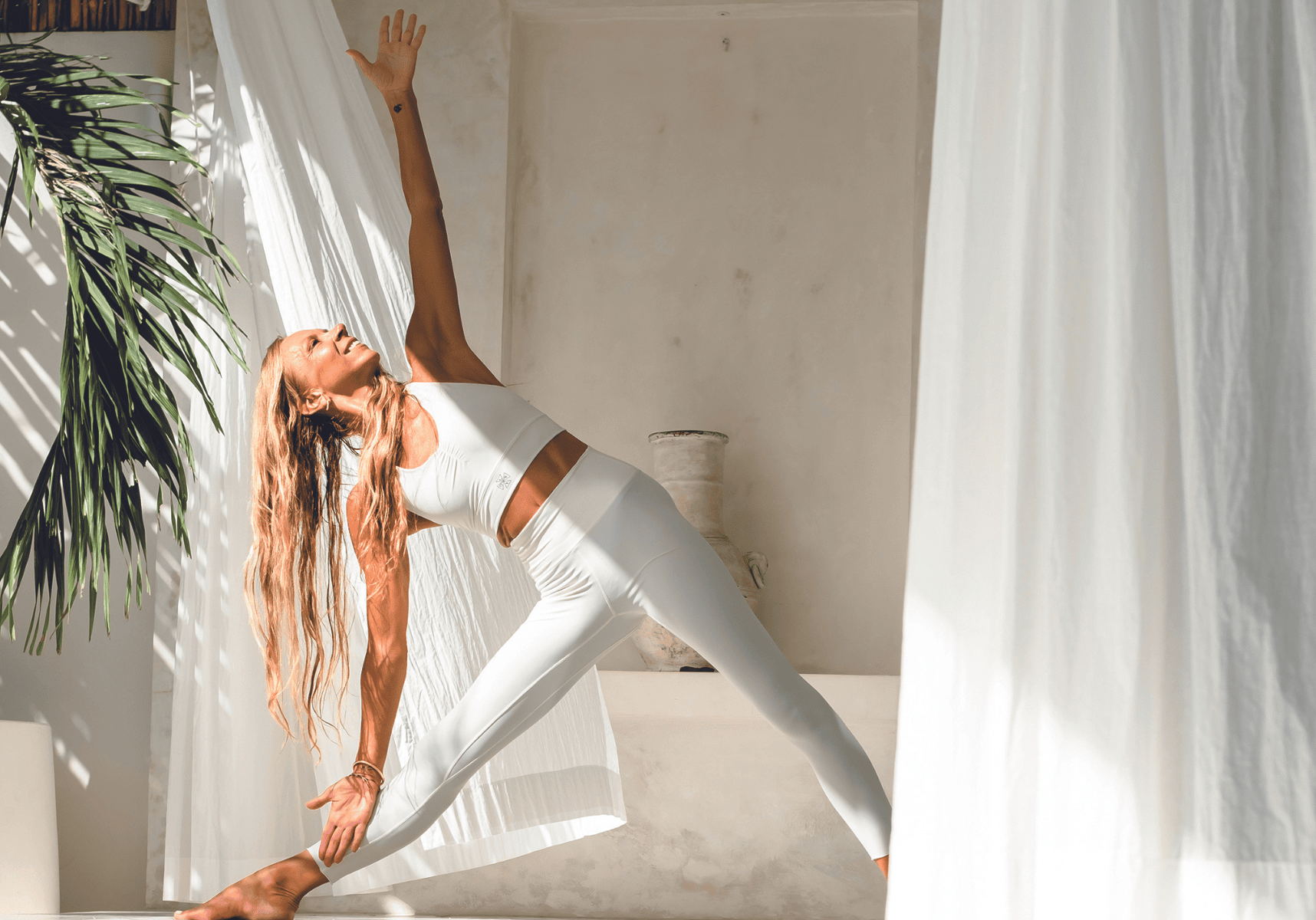
7. Triangle Pose (Trikonasana)
Triangle (Trikonasana) is a foundational yoga pose where the three sides of the triangle represent the symbol of the trinity. We see this as the creative, sustaining and changing force. The triangle also signifies the mind, body and spirit, understanding the importance of seeing the whole ‘picture’ to be able to transform enough to create balance in life. A symbolic pose signifying union with the self.
From the tranquillity found in Peaceful Warrior, inhale and rise with strong legs and active core, extending your right leg. Exhale reach to your right, keeping your waist long, extending directly over your leg. Your right arm gently supported on your right leg, or floor, and your left arm reaching up together with your gaze. Your right hip rotating forward and left hip back as you ground your tailbone down towards the left heel. Keep your arms activated, creating a straight line emanating from the heart with a strong core radiating in all directions. Stay in this symbolic pose for three to six breaths while you contemplate on the idea of transformation and what that might mean to you.
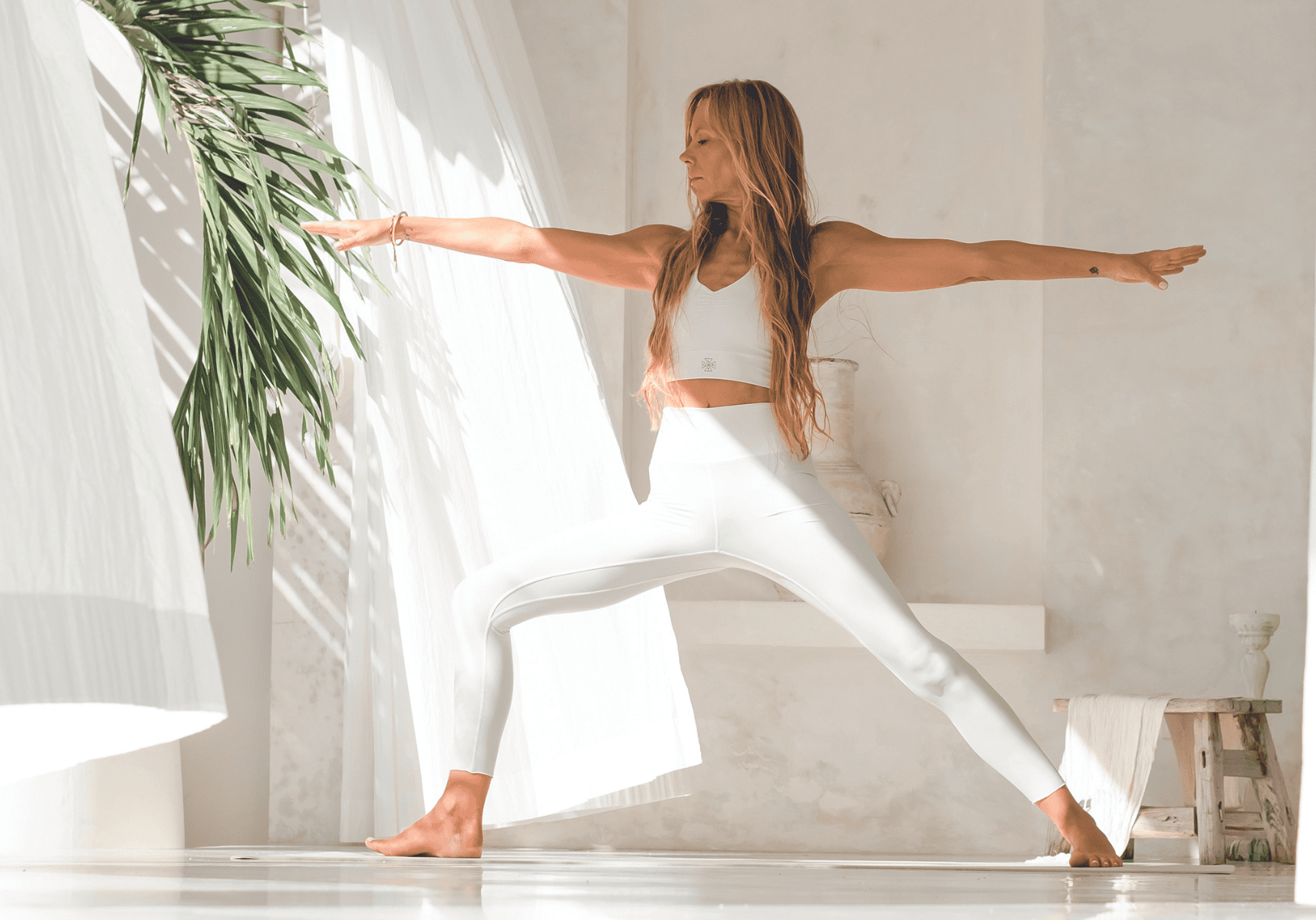
8. Warrior 2 (Virabhadrasana 2)
Moving back into Warrior 2. From the transformational place
of triangle pose rise strong on an inhalation and as you exhale,
bend your right knee returning back to Warrior pose and feel
a new sense of strength and openness in your body and heart.
Repeat the sequence on your left side.
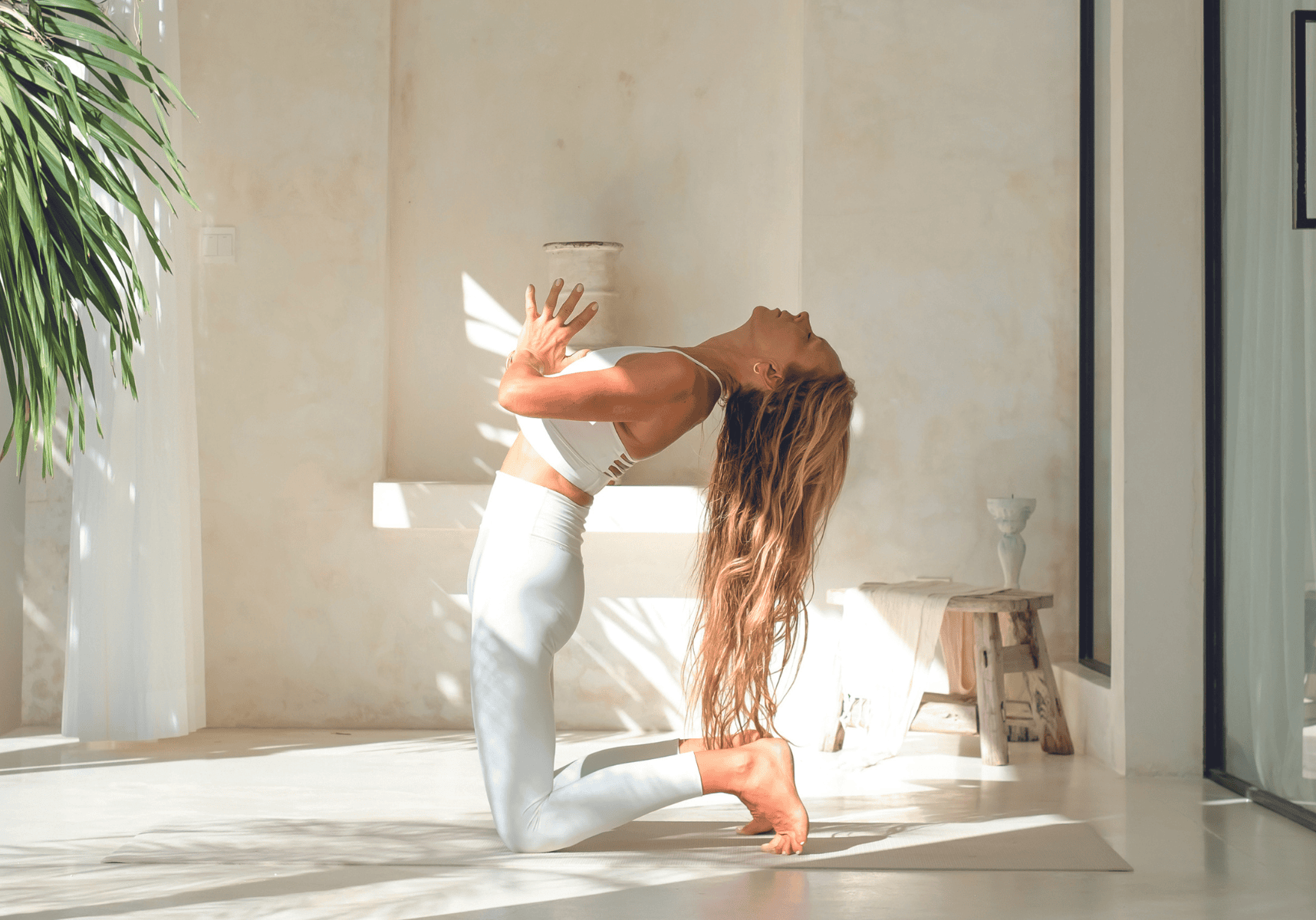
9. Camel Pose (Ustrasana)
Camel Pose (Ustrasana) is a powerful backbend deeply rooted in the yogic philosophy inviting you to open your heart. Our heart is the place of giving and receiving love - a place of compassion and deep knowledge. When your heart becomes truly activated you enter a place beyond words and we can serve our selves and the world in the best way possible.
The arching of your back in this pose resembles the hump of a camel teaching us the camel's resilience and willpower in the quest of living in our heart.
From your standing sequence mindfully make your way down to the mat. Place your knees hipwards apart and your hands in Anjali Mudra at the heart as a symbol of unity where seeds of peace are sown.
Drop your tailbone down between your knees, spine long, core alive and heart lifted. Bring your hands to your back for support. Inhale from the base of the spine to the crown of the head, and as you exhale arch back feeling the newfound space in your heart. Look after your lower back and only drop the hands to your heels if it feels good.
Keep your hips moving forward and your chest lifting towards the sky, dropping the head back just enough. Stay here for 3-6 breaths keeping your breathing slow and deep, activating your heart frequency.
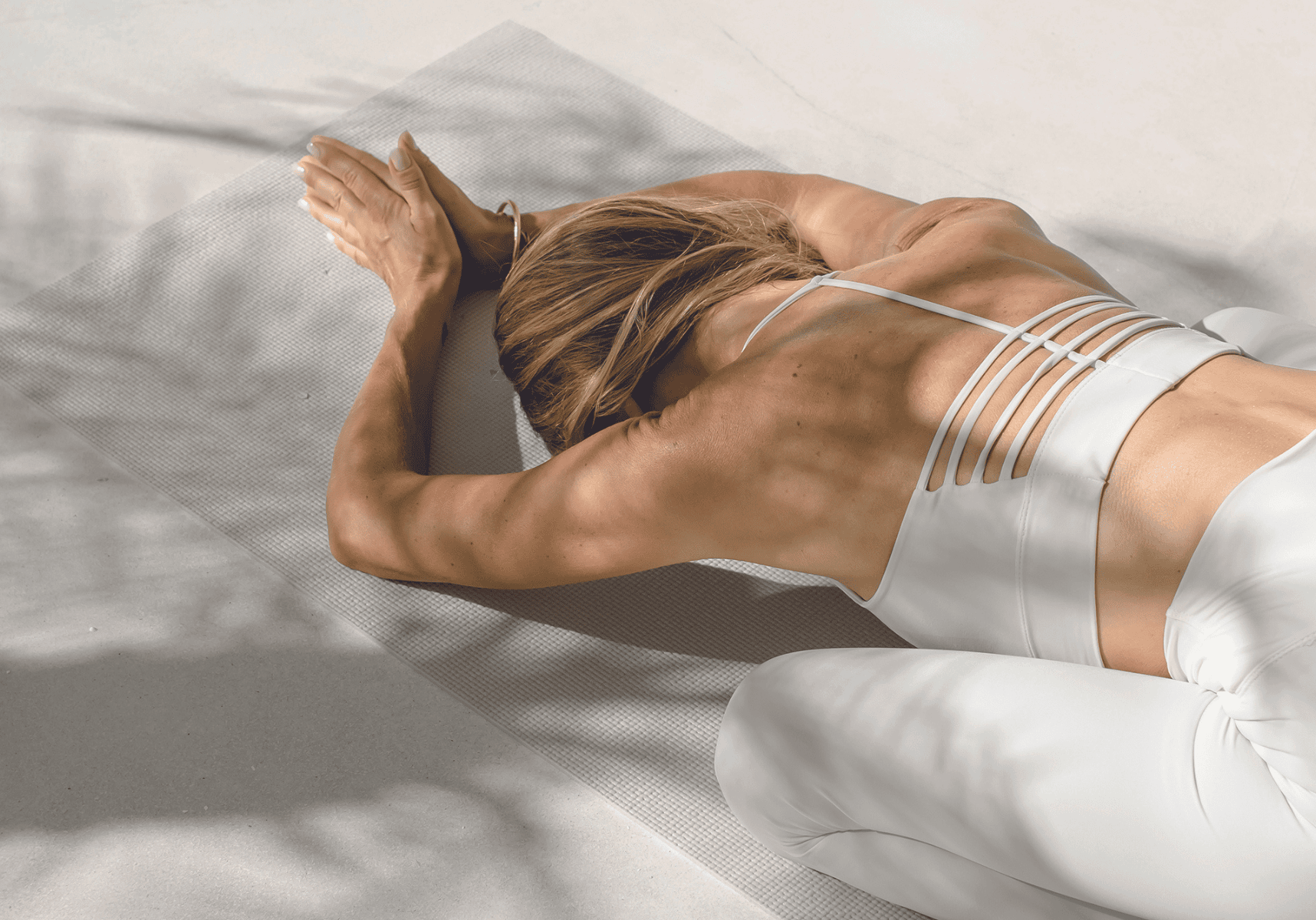
10. Extended Child Pose (Balasana)
Take a deep inhale and slowly fall forward over your thighs entering Extended Child Pose as you exhale. Humbly taking Anjali Mudra, bowing to your pure heart which takes form in truth, consciousness and true bliss. Luxuriate in this experience for a few breaths as you bathe in the healing qualities of your practice.
THE ART OF STILLING THE MIND
In the chaos of modern life, amidst the incessant buzz of technology and the demands of everyday existence, finding moments of inner peace and stillness can feel like a distant dream. Yet, within each of us lies the capacity to quiet the restless chatter of the mind and embark on a profound journey inward through the practice of meditation. The transformative power of meditation offers countless benefits to those who dare to venture within.
Stilling the Mind
At its core, meditation is the art of stilling the mind. It is the practice of cultivating awareness in the present moment. In a world filled with distractions and constant stimulation, meditation offers a sanctuary—a refuge where we can pause, breathe, and connect with the essence of our being.
The Journey Inward
Meditation is a journey inward—an exploration of the vast landscape of our inner world. As we close our eyes and turn our attention inward, we begin to unravel the layers of conditioning, thought patterns, and emotions that obscure our true nature. With each breath, we peel back the layers, diving deeper into the depths of our consciousness, and discovering the boundless reservoir of peace, wisdom, and love that resides within.
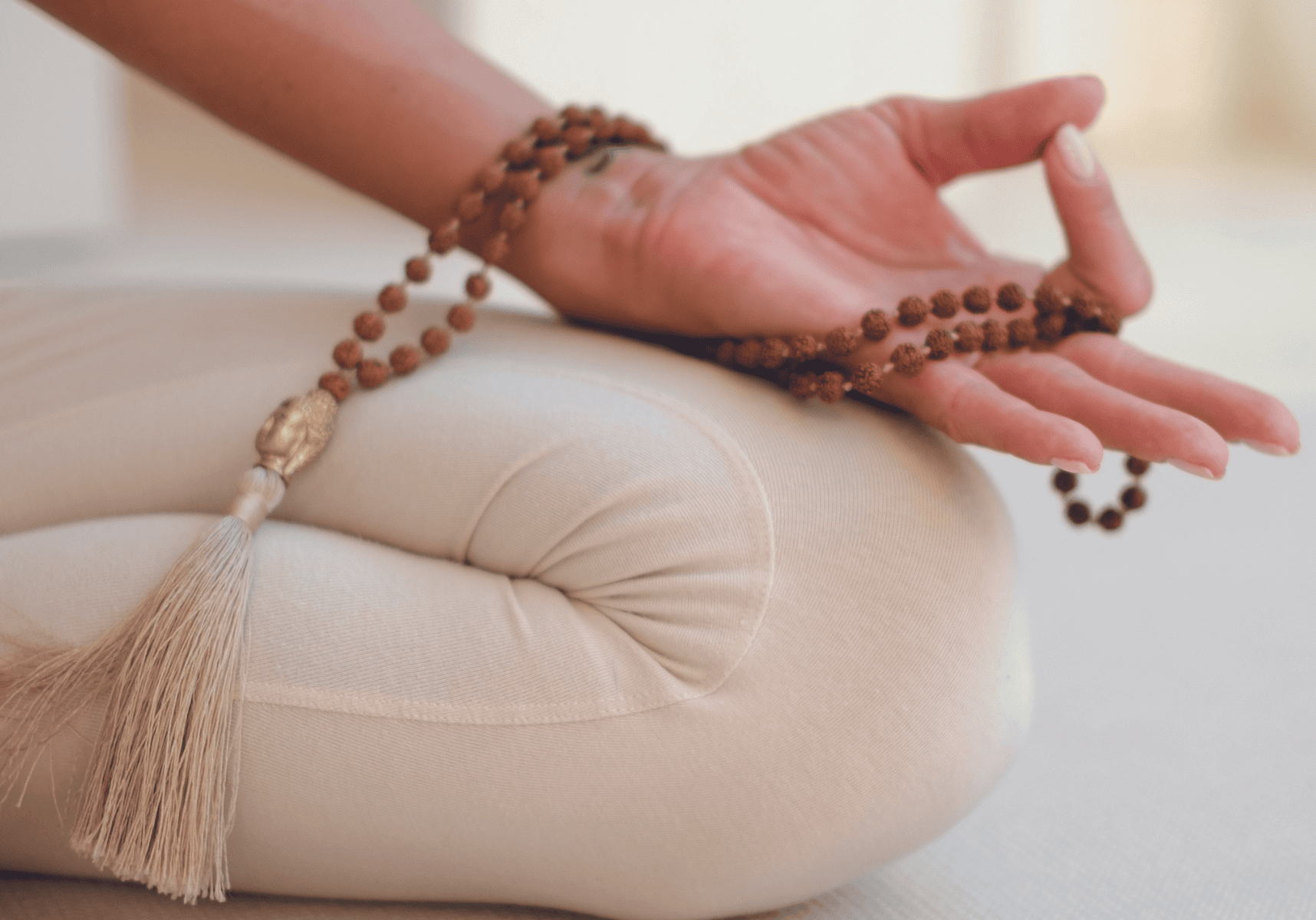
11. Easy Pose (Sukhasana)
Easy Pose known as Sukhasana in Sanskrit stands out as a fundamental pose known for its simplicity and profound benefits. The process of moving through the physical postures (asanas) has its purpose to ‘wring’ out tension stored in our bodies and mind as a preparation for sitting meditation.
Incorporating Sukhasana into your yoga routine can serve as a cornerstone for cultivating mindfulness, balance, and tranquillity both on and off the mat. So, take a seat, find your ease, and let Sukhasana guide you deeper on your journey to inner harmony and wellbeing as you set your intention to integrate your practice.
As you slowly come out of your previous pose, extend your legs in front of you while keeping the peace of your practice alive. Cross your legs and centre your pelvis and use props for comfort if needed. Ensure your weight is evenly distributed across both sitting bones, allowing the pelvis to be in a neutral position dropping your seat downward, experiencing a softening from your hips.
Lengthen your spine and lift through the crown of your head, let your shoulder blades melt down towards your waist anchoring your tailbone down. Draw the navel slightly back towards the spine and upward supporting the lift of your heart. Your head is balanced on relaxed shoulders, your face is soft and your eyes gently closed.
Your hands are simply resting on your knees, taking Chin Mudra, palms facing up, index finger and thumb touching. Chin Mudra helps you to seal in the wisdom received in your practice connecting you to the universal power, uniting the two. Notice the gentle flow of your breath and let this be the thread that weaves your practice together while you rest in your heart.
Wenche Beard is the founder of Living Yoga Community and The Yoga Life Studio in Eastbourne. An experienced teacher who inspires a transformational practice, emphasising inclusivity and personal growth, her love affair with yoga started 24 years ago and she has since dedicated her life to sharing the practice worldwide, with a passion and knowledge that is contagious and inspiring. She encourages all her students to live authentically, no matter what we are given, which she refers to as ‘Living Yoga’. Connect on Instagram @wenchebeard


